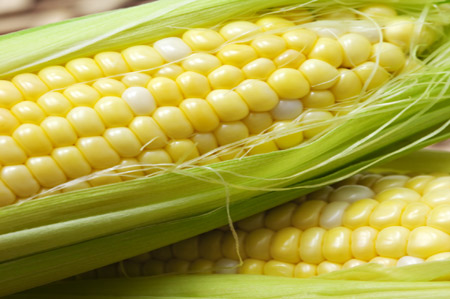Corn a better bet than soybeans
Category: Grains
 (Agrimoney) – Corn represents a better bet than soybeans, even after the strong recovery in futures this month, Commerzbank said, while slashing forecasts for prices of both crops, and cotton and wheat too.
(Agrimoney) – Corn represents a better bet than soybeans, even after the strong recovery in futures this month, Commerzbank said, while slashing forecasts for prices of both crops, and cotton and wheat too.
The bank cut by up to $3 a bushel its estimates for soybean futures, and by up to $1.10 a bushel its forecasts for Chicago grains, reflecting the autumn slide in prices on ideas of bumper world supplies.
But the decline has taken them to “rock bottom” levels which for grains at least, and for Paris rapeseed futures, has opened the way for some revival in values.
“The fact that prices have now hit multi-year lows will not be without effect on supply and demand,” Commerzbank said.
Weaker harvests ahead?
However, the impact of weak prices in curbing supplies looks to be greatest in corn rather than soybeans, Commerzbank said, keeping its forecasts for futures in the grain a little above those that investors are pricing in.
“Lower prices should lead to a restriction of [corn] planting in the southern hemisphere,” given the relatively weak values of corn, which remain at a relatively depressed level compared with soybeans, Commerzbank said.
The bank – forecasting a return of corn futures to $4.00 a bushel by the July-to-September quarter of next year, compared with an early-2016 period shown by market prices – flagged a forecast from Brazil’s Conab bureau of a drop to 72m-75m tonnes in domestic corn production next year, down from 80m tonnes last season.
“A decline in production is also anticipated for Argentina.”
And, with Informa Economics forecasting that US corn sowings will fall behind soybean area next year for the first time in decades, “the first outlook for 2015 suggest that acreage rations will shift to corn’s disadvantage on an international scale.
“If this expectation proves true, corn prices should settle at a slightly higher level.”
Corn vs soybeans
But for soybeans, Commerzbank forecast prices staying around $9.50 a bushel until at least the end of calendar 2015 – forecasts will below the futures curve, which suggests values returning above $9.90 a bushel by September.
“Global soybean production should remain very high,” the bank said.
“We see no reason for a notable increase [in prices] in the foreseeable future.
“The price ratio relative to corn should normalise in 2015 in any case.”
The much-watched soybean:corn ratio, on a November 2015: December 2015 contract basis, stood at 2.45:1, a historically elevated level.
‘A little tailwind’
For wheat, the bank cut its price forecasts to levels close to the futures curve, for both Chicago and Paris contracts.
While global sowings of wheat are expected to show a small rise in 2015, according to the International Grains Council, “we do expect a little tailwind from the demand side,” besides a pull from the revival in prices of rival grain corn.
However, for Paris rapeseed, the bank was little more optimistic than investors, seeing prices end 2015 at about E350 a tonne, albeit a forecast E20 a tonne less generous than its previous outlook.
“The positive surprise created by the EU harvest of more than 23m tonnes is to be offset against the decline in Canada’s crop after the record harvest in 2013.”
Cotton prospects
Commerzbank was also relatively sanguine on cotton prices, seeing a recovery to 70 cents a pound by the end of next year, above the level of 64.82 cents a pound that December 2015 futures are pricing in.
The bank flagged that China is suspending until August sales of cotton from its huge state inventories – the prospect of which being drawn down has been a major worry to the market.
Still, given the prospect of rising US stocks and falling Chinese imports, “there is hardly any reason at present for a lasting trend reversal in cotton prices in the near future”.




